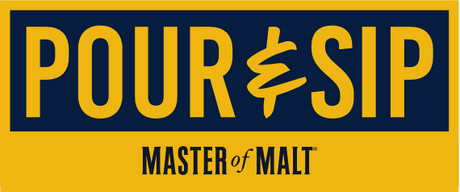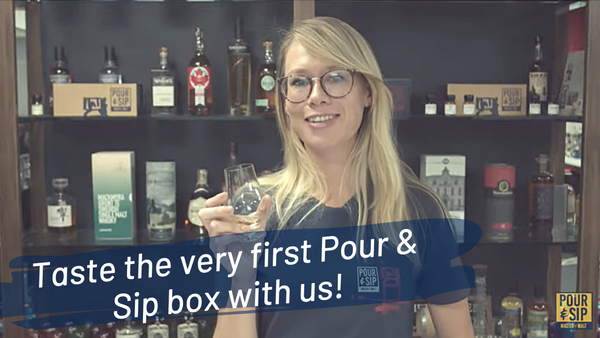Decoding the 10 bourbon recipes at Four Roses

There are 10 different recipes at the Four Roses distillery’s disposal, and its Single Barrel bourbon, found in this month’s Pour & Sip box, uses just one, so you can see it as a standalone bottling in all its glory. The recipe is catchily-named OBSV, so we spoke to ambassador Gergő Muráth about decoding the recipe names, what they taste like, and why they have so many in the first place.
Four Roses ambassador Gergő Muráth is at a drinks convention when I call him to chat about all things bourbon – though funnily enough, I’ve dragged him away from talking about rum, which is where his drinks career began. “In rum, especially Jamaican rum, it’s very common to have marks, different recipes dealing with different yeast types, fermentation lengths, and occasionally distillation methods – so to me that was normal,” he begins. “Whereas in whiskey, at least in bourbon, you tend to have the same mash bill and the same yeast strain, and the bourbons are differentiated by age and warehouse position of the barrels.”

You may be surprised to hear that many well known bourbons – “Buffalo Trace, Eagle Rare, and George T. Stagg,” – are the same whiskey in terms of mash bill and yeast strain. But they’re aged for different amounts of time, released at different strengths, and most importantly, aged at different places in the warehouse. Traditional American whiskey warehouses will stack up to eight or nine barrels on top of each other, with the top barrels seeing a much higher temperature than those on the bottom. Whereas with Four Roses, the first big point of difference is that the warehouses are single racked, so there’s none of that fluctuation in wood and spirit interaction between the top and bottom racks in traditional warehouses.
The second and highly talked about difference with Four Roses is that it has 10 different bourbon recipes to mix and match, made up of two mash bills and five yeast strains. The yeasts are called V, O, Q, F, and K, but they have nicknames depending on their flavour profile (listed in order). “We have ‘light fruit’, ‘rich fruit’, ‘floral’, ‘herbaceous’ (think mint and basil), and ‘spice’ (denoting baking spice rather than chilli),” says Muráth.

When it comes to the two mash bills, there’s a high corn and a high rye mash bill, called ‘E’ and ‘B’ respectively. “What I would say is that even with our high corn mash bill, it’s still extremely high in rye compared to a lot of others.” Other well-known bourbons generally sit somewhere between 10-14% rye, whereas Four Roses high corn mash bill is 20% rye, with the rest made up of 75% corn and 5% malted barley (the small amount of malted barley is to kickstart the fermentation). The high rye mash bill, ‘B’, is made up of 60% corn, 35% rye, and 5% malted barley. Interestingly, Muráth tells me that something which surprised him when he first forayed into the whiskey world was how much of the rye comes from Europe: “whereas all the corn is grown in America for bourbon, a lot of the rye is imported from either Europe or Canada.”

“Any time you see a Four Roses whiskey you’ll see a code on the bottle, which denotes the mash bills and yeasts used,” Muráth explains to me. Let’s break down OBSV, for example: every Four Roses expression starts with ‘O’ as it indicates it was made at the distillery, and has an ‘S’ as the third letter, as that indicates it’s a straight bourbon whiskey* (of which all Four Roses’ are). The ‘B’ here indicates the mash bill (in this case, high rye), while the ‘V’ indicates the yeast strain (in this case, ‘delicate fruit’).
The reason behind the five yeast strains is that, for several decades, Four Roses was owned by Seagrams (a Canadian spirits company), during which time it was discontinued in the USA, where the focus was on blended whiskey instead, focusing on bringing together spirits from five different distilleries. Interestingly, when Kirin Brewing Company acquired Four Roses in 2002 (and still owns it), bringing Four Roses back to its home country, it decided to keep those five yeast strains from the five distilleries – even though now it’s distilled in one place.

In the original Four Roses bourbon all 10 possible recipes are used, both mash bills, fermented with all of the five yeasts – “being able to balance all of those and come up with the blend in the first place is just an incredible job by the blenders,” praises Muráth. The Single Barrel 100 Proof (the one found in Europe, he clarifies, as there are a whole load more single barrel picks over in the USA – “even Wholefoods has a barrel pick in the US, which is just hilarious to me!”) always uses one mash (high rye) and one yeast, the light fruit yeast – “expect cherry and stone fruit, as it’s not that rich stewed fruit style – more peaches, apricots, and pears.” The high rye mash contributes a lot of those spicy flavours.
I ask if it’s possible to have a signature style, if there are 10 possible recipe combinations throughout the range? I receive an excited, “certainly!” in reply. The markings of it are high rye content, and the complexity and spicy notes it brings, but also a mellow and fruit-forward profile. “Because we single rack the warehouses, it’s more distillate-driven and less barrel-driven than a lot of other bourbons.” Obviously barrel influence is a big part, because Four Roses still has to use virgin American oak in order to legally call its spirits bourbon, “which is always going to land some big flavours to any distillate”. The component bourbons are well-aged, too, a minimum of five years old in the original, and six or seven years for the Small Batch, “but it can go up to around 15 years old in the blend,” he tells me. A bourbon aged for 15 years? That’s something you don’t see very often.

As for Muráth himself, his spirits journey began when he was working for Jamaica’s Worthy Park rum distillery, distributed by the same company as Four Roses, Spirit Cartel. After he left Worthy Park he heard about the Four Roses opening, his interest was piqued – the brand’s original bourbon was already his house pour behind the bar, “and I’ve always loved bourbon,” he tells me. He later confesses that he actually heard of it through one of his friends messaging him about applying for the job himself, who wanted Muráth’s contacts at Spirit Cartel. They’re still friends, don’t worry. “I have apologised!” he admits.
*A straight bourbon whiskey must legally be aged for a minimum of two years in new charred American oak barrels, can’t be distilled to more than 80% ABV, and must be bottled without colouring or flavouring.



